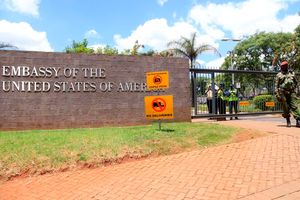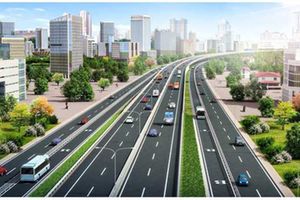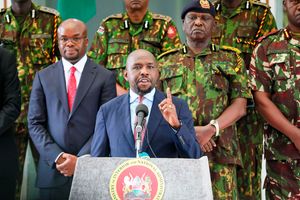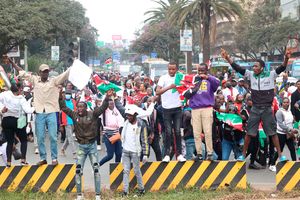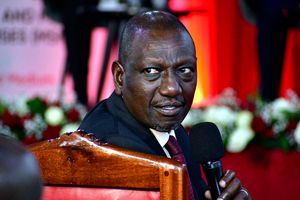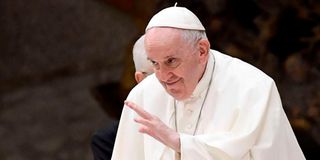
Pope Francis.
This past week, we witnessed two profound moments of reflection for our shared planet. On April 22, the world celebrated Earth Day under the resonant theme “Our Power, Our Planet” — a global reminder that the ability to change the course of environmental degradation is in our hands. Sadly, just a day prior, we lost one of the most powerful climate champions of our time: Pope Francis.
His Holiness was not only a spiritual leader but also a fierce defender of the most vulnerable and of the environment. As the first pope to place climate justice at the heart of his papacy, he became an unwavering advocate for environmental stewardship — perhaps the only world leader who consistently framed climate change as both an ecological and a deeply ethical crisis.
From the outset of his leadership in 2013, he called on political, economic, and social leaders to assume the role of “protector” — not just of people, but of all creation. His inaugural mass echoed the teachings of his namesake, Saint Francis of Assisi, who revered the Earth as our sister and mother. And when Pope Francis released Laudato Si’ in 2015 — the first-ever papal encyclical on climate change — he bridged the sacred and the scientific, the poetic and the political. It was more than a letter. It was a summons to a moral awakening.
Global consensus
"This sister now cries out to us because of the harm we have inflicted on her," he wrote, imploring humanity to reimagine its place in nature — not as conquerors, but as caretakers. He challenged us to adopt “a new way of thinking about human beings, life, society and our relationship with nature.”
The influence of Laudato Si’ was profound. It helped catalyse global consensus in the lead-up to the 2015 Paris Climate Agreement and gave birth to the Laudato Si’ Movement, galvanizing Catholics and communities across the world to take climate action.
Pope Francis passing a day before Earth Day feels like a poignant passing of the baton. His legacy now lives not only in papal archives but in grassroots movements, in young climate activists, in interfaith alliances, and in every community striving for ecological justice.
This year’s Earth Day theme, Our Power, Our Planet, struck a personal chord. It echoed what I’ve always believed: the solutions to the climate crisis exist — what’s often missing is the political will to implement them. But we, the people, hold power. History shows us this.
Earthrise — the iconic image taken by Apollo 8 astronauts in 1968 was the first time humanity saw our planet from the vantage of the moon. It was a moment that shifted human perspective. For the first time, we saw Earth as it truly is: a small, vibrant and vulnerable living planet floating in the vast darkness of space. No borders. No politics. Just one shared home.
Earthrise revealed the fragility of our planet — and the reality that everything we depend on is contained within that thin blue atmosphere. It made the science of limits visible. And it lit a spark. That image is widely credited with fueling the environmental movement and helping to inspire the very first Earth Day in 1970.
More than five decades later, we face a stark truth: the Earth in that photo has changed. Today, that same Earth is more “tattered” as environmentalist Bill Mckibben described in his Earth Day post. Some of the white has faded at the poles, and rising seas and storms have scarred the surface. But its beauty, its resilience, and its power still take my breath away. And more importantly — it is “still sublime. Still worth fighting for.”
Restoring landscapes
We live on a planet with finite resources and interconnected systems. What we do in one corner affects the whole. And what Earthrise showed us back then is what science and communities are telling us now: this is the only home we have. And it is up to all of us to protect it.
That photograph helped propel the modern environmental movement and led to landmark protections like the Clean Air Act and the formation of the Environmental Protection Agency in the United States. That was the power of citizens — mothers, students, farmers, and teachers — demanding better.
And today, I see that same power alive in the women restoring landscapes in Kenya, in the Indigenous guardians of the Amazon, and in youth everywhere who are refusing to accept a future defined by collapse. The climate movement isn’t a Western export. It is local, diverse, and growing. It is rooted in the places where people still live in a deep relationship with the Earth. And it is these communities — often the least responsible for the climate crisis — who are leading the most innovative, resilient, and holistic solutions. It is they who are powering the movement for social and climate justice.
As we mourn Pope Francis, we must also honour him by heeding his call. Let us see climate action not only as a scientific imperative but as a spiritual and moral duty. Let us draw power from our shared humanity and from the Earth herself, who continues to give even as we take.
Wanjira Mathai is the MD for Africa & Global Partnerships at the World Resources Institute and Chair of the Wangari Maathai Foundation.

